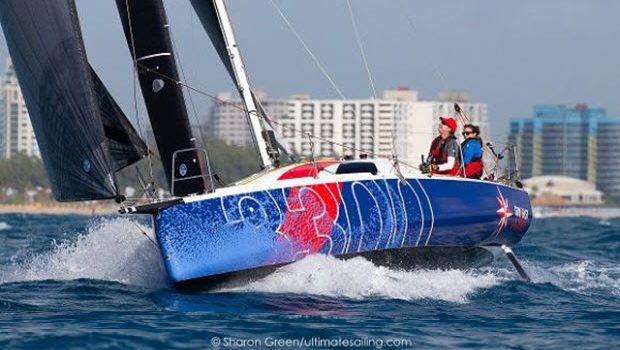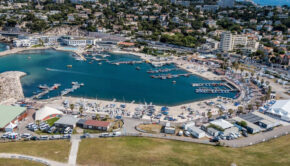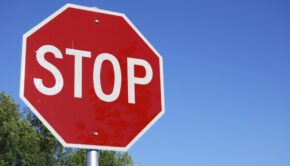New energy for shorthanded racing
Published on March 11th, 2020
With the inclusion of offshore sailing into the 2024 Olympics, a new spotlight shines onto a previously established area of our sport. Veteran doublehanded offshore sailors can now fight for Gold, and Olympic hopefuls can forge a new pathway to their dream. A vast majority of sailors may also see a fresh opportunity to get out on the water.
“I think this is going to have a massive impact on our sport,” said Katie Pettibone, who has herself competed in multiple America’s Cups, Around the World Races, and Olympic campaigns. “It opens up opportunities for sailors with Olympic dreams, but can also invigorate local yacht club racing.”
Pettibone campaigned in the mixed gender Nacra 17 class and missed qualifying for Rio 2016 by just one point after coming back from a devastating knee injury sustained while training. Most recently, she partnered with the expert shorthanded offshore sailor, Mike Hennesey, and his Class 40 to take on the Key West Race in January to start the preparation for making her Olympic dream come true.
“Doublehanded offshore racing merges the performance level of the America’s Cup with the adventurism of the Around the World Race perfectly,” observed Pettibone. “For me, the best part of sailing is learning, so it is intellectually very fun to step into this new endeavor. I know many other sailors will feel the same way.”
Another accomplished offshore sailor stepping into the doublehanded sailing realm is Ken Read. He and Suzy Leech – a seasoned competitor in her own right – also competed in the Key West Race, and both walked away yearning for more.
“Doublehanded sailing has been going on in this country for a long time,” said Read. “My goal has always been to look for new ways to get people off the dock and on the water. If we make it fun first, then the best people rise to the top.”
Leech added, “The sport, and American sailors in general, are going to come out of this on the other side better. Thirty years ago, there were not as many opportunities to get out on the water and compete on a level playing field – especially for women.”
She explains that beyond gender, sailors tend to get pigeonholed into positions: bow person, trimmer, helmsman, navigator, etc. With the essential need to be a well-rounded sailor with shorthanded offshore sailing, the talent in the country and sport will inevitably rise.
Getting started is going to be the biggest challenge for many, and support from race authorities and sailing organizations will be important, but it does not have to be daunting. Jonathan McKee, Olympic medalist, offshore sailor, and coach sees this as a time to lean in. “No excuses, just go sailing. Get out on the water any way you can and align yourself with other like-minded sailors to make it more fun and efficient.”
McKee explains that building the skillset is the most important thing you can do. Doublehanded, fully crewed, or dinghy racing at the end of the day is all sailin but just a “different time scale and geography.”
Race organizers and organizations are trying to bridge the gap between the dock and the doublehanded racecourse. Chris Woosley helped organize the Key West Race on a very tight timeline for the doublehanded competitors by establishing the ratings for handicapping the boats against each other and the whole fleet. ,
“They were just so fun to watch,” noted Woosley. “Key West Race is a tough navigation race; it’s more like ten races in one. So even with two very different boats lining up against a whole fleet, it was dynamic. If we had even similar boats, it would make for even more high caliber racing.”
Woosley also believes this will invite more budget-conscious sailors to participate as sailing shorthanded also helps reduce costs.
Also trying to get more sailors into the doublehanded, mixed-gendered sailing scene is Peter Becker with the Young American Sailing Association (YASA). “We have two J/105s that we are setting up and modifying for doublehanded racing,” says Becker. “We want to provide a chance to not just get on the water but compete at a high level.”
YASA is currently reviewing applications from sailors wishing to participate in this year’s Newport Bermuda Race in those J/105s.
More doublehanded events or classes are being added to race calendars, including the Mixed Two Person Event at the 2020 Chicago Yacht Club Race to Mackinac starting on July 17 in the J/88. Entry for the J/88 is to be submitted before April 1, 2020 (click here). This event has strong U.S. selection implications for the 2020 Offshore World Championship (click here).
There are also plenty of local races around the country where distance doublehanded sailing occurs. All the athletes and the organizers we spoke to say the same thing: just go down to your local club and start networking and talking to people to get rides. There is no better way to train than to put in the time.
To learn more about the Mixed Two Person Offshore Keelboat 2024, click here.
Source: Kate Wilson, US Sailing









 We’ll keep your information safe.
We’ll keep your information safe.